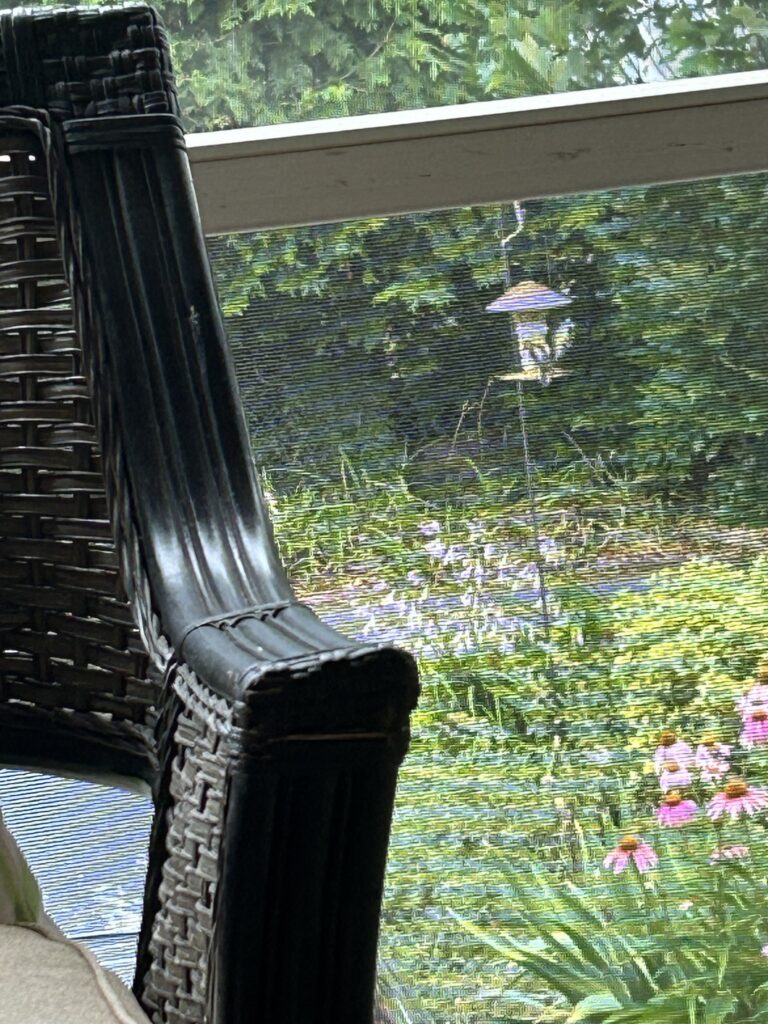The early weeks of summer have proven to be as expected—hot. The hibiscus have sprung from their green and maroon leaves. The bushes are cut back over the winter to mere inches from the ground. It’s a wonder they return to such grandeur by the next summer. It flowers throughout summer, continuing to open as older ones wither and die.
The baby birds are practicing their wing flaps, often staying in one position in the air and then slowly falling back to earth, wings flapping all the way. The babies are easy to spot with their pillowy-heads and odd behaviors. Some will let you approach as they haven’t learned to fear us yet.
Each morning, a pair of woodpeckers find their way to the safflower cylinder. One eats, effectively hammering the packed seed with its beak. The other, with clean markings of black and white, watches the other and attempts to imitate what it sees. After several tries, the more efficient bird approaches the younger and places a seed in its mouth.

I’ve put out a tray feeder to help with crowding around the other feeders, and the squirrel has decided to be a participant, as well. Our English Lab, Ivy, warns us of an intruder with her deep, ferocious bark. I try to explain that we don’t need her protection, but to no avail. The squirrel can share, too.

The birds I long to see most each summer are the hummingbirds. The feeder has fresh nectar and my eyes often fall to that red feeder as I await the arrival of these special birds. It seems they will never come until they do and then it seems that they’ve always been here. I moved the feeder so it’s nearer to the echinacea. Birds like variety, too.


Another buietifuly written page of nature. Thank you Denise 😊
Thank you, Daniel!
Her stories from the porch never cease to hit it out of the park!!!